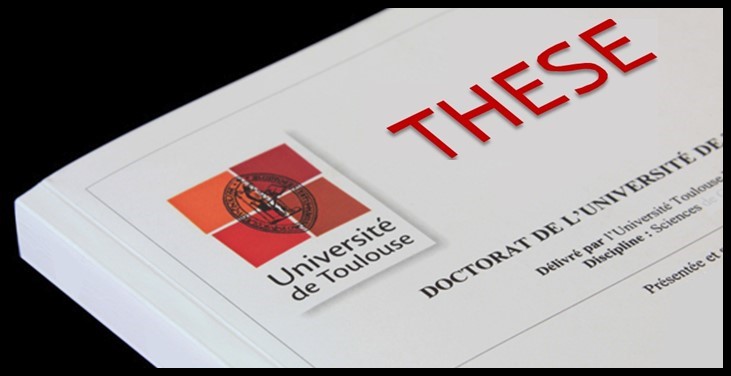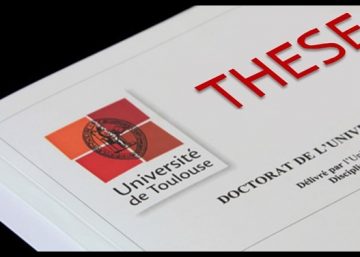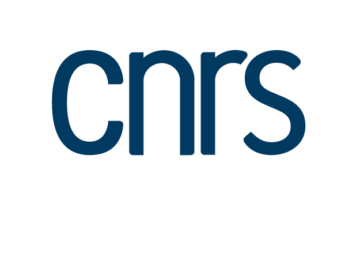La soutenance de thèse de Baptiste ARATI, intitulée « Manufacturing and characterization of self-healing polymers intended for the electrical insulation of future power modules », aura lieu le 21 février 2023, à 10h00 dans l’amphithéâtre Cotton (Université Toulouse 3 Paul Sabatier).
Les travaux de thèse ont été réalisés sous la direction de Gilbert Teyssedre et Vincent Bley, en partenariat avec Mitsubishi Electrics R&D Center Europe (MERCE), au sein du groupe DSF.
Membres du Jury :
- Rint SIJBESMA, Rapporteur, Eindhoven University of Technology, Netherlands
- Cyril BUTTAY, Rapporteur, Ampère, CNRS
- Corinne ALONSO, Examinatrice, LAAS, Université Paul Sabatier
- Lara PERRIN, Examinatrice, LEPMI, Université Savoie Mont Blanc
- Gilbert TEYSSEDRE, Directeur de thèse, LAPLACE, CNRS
- Vincent BLEY, Co-encadrant de thèse, LAPLACE, Université Paul Sabatier
- Pierre-Yves PICHON, Co-encadrant de thèse, MERCE, Rennes
Résumé :
Conventional power modules are electrically insulated with soft silicone gel, that surrounds the power components and their connective wire bonds. But with the growing need for higher power densities, faster switching frequencies and longer operational times, new power module architectures that can satisfy the reliability requirements are now developed.
One of the most promising concept for new Power Modules packages is the PCB (Printed Circuit Board)-embedded design, where the power components are buried inside the thermoset composite substrate. However, confining the active component raises technical challenges and thermo-mechanical failure is a major reliability concern for these designs.
With the recent change of paradigm in thermosetting materials covalent adaptable networks cross the gap between thermosetting and thermoplastic and offer new properties for the dielectric material (intrinsic self-healing, tuneable thermomechanical profile, recycling…). Usually intended for mechanical applications, the development of dynamic networks is promising for repairing mechanical damages caused during thermal cycles and prevent the subsequent electrical degradation of the PCBs. The objective of this thesis is therefore to develop a new self-healing polymer, compatible with the requirements of the next generation of PM and that can answer their reliability needs.
Vitrimers have especially echoed in the scientific community as a promising self-healing solution compatible with industrial applications. By directly reacting industrial epoxy resins used in the PCB field with carboxylic acids, it is possible to create a transesterification-based vitrimer to produce self-healing PCBs. With the ability to tune properties with carboxylic acid blends and catalyst content, vitrimers are offering a flexible base to explore new self-healing power module concepts. Based on the most used epoxy resin in the PCB manufacturing industry, the main vitrimer of this study is produced from bulk polymerization of diglycidyl ether of bisphenol A (DGEBA) resin and sebacic acid, in the presence of 1-methylimidazole as catalyst.
Unlike reprocessing demonstrations shown in the literature, a critical study of the healing capabilities of the material within the application frame is proposed. By removing the use of constant external pressure for the healing process, healing conditions are closer to what can be encountered in operation. To promote high mobility without the added pressure work, shape-memory is used to assist the healing process, yielding excellent joining ability and healing efficiency, demonstrated both on mechanical and electrical indicators.
The applicability of such a material to the power field is also demonstrated. The very high dielectric strength and thermal stability of the material is shown, validating its use for high-power applications. Manufacturing of a complete self-healing vitrimeric PCB compatible with high-density interconnection processes is shown, demonstrating that these materials are valuable for the future power module packaging trends.
Finally, a study of the main conduction mechanism of vitrimers in regard to their mobility is proposed. Conduction in polymers is often based on relaxation modes in polymeric chains, allowing the diffusion of conductive species in the network. In addition of the glass transition, vitrimers also exhibit a vitrimeric transition, driven by the trans-esterification exchange reaction in the network. In that regard, it is possible to express a link between conductivity and viscosity at high temperatures, that may be useful to design efficient vitrimers for electrical insulation applications.




